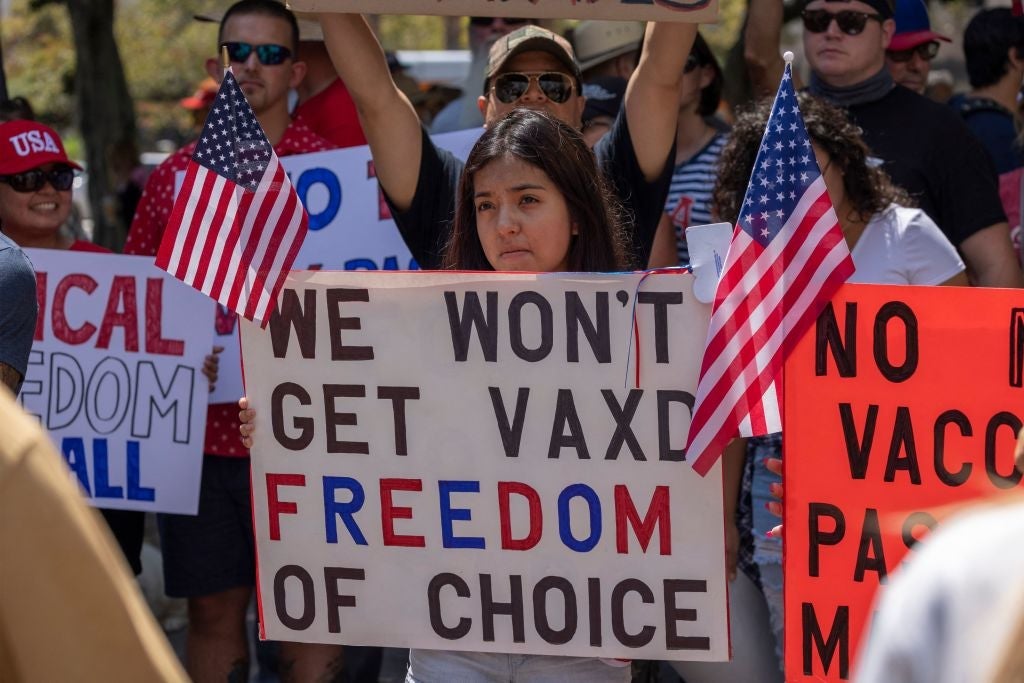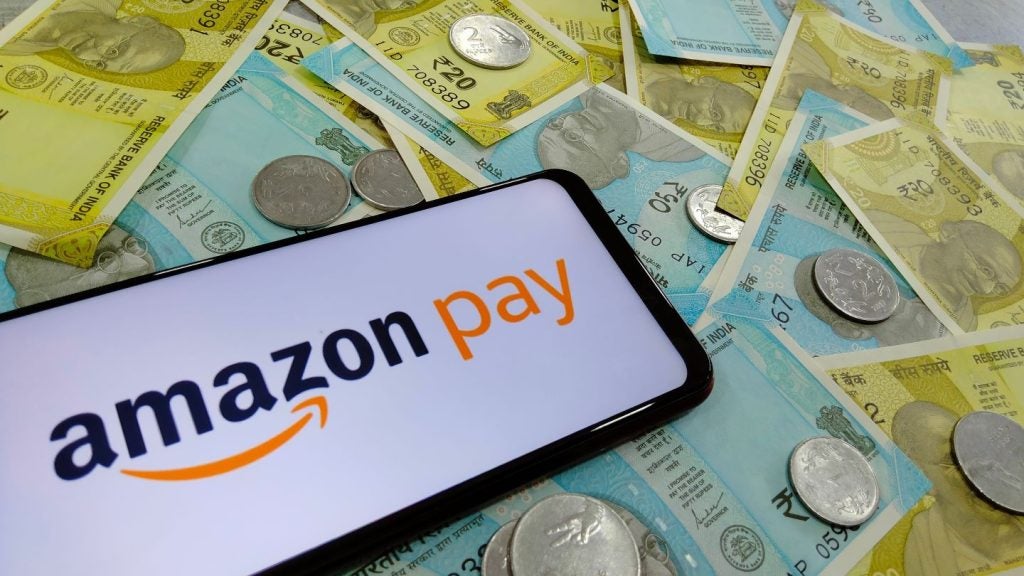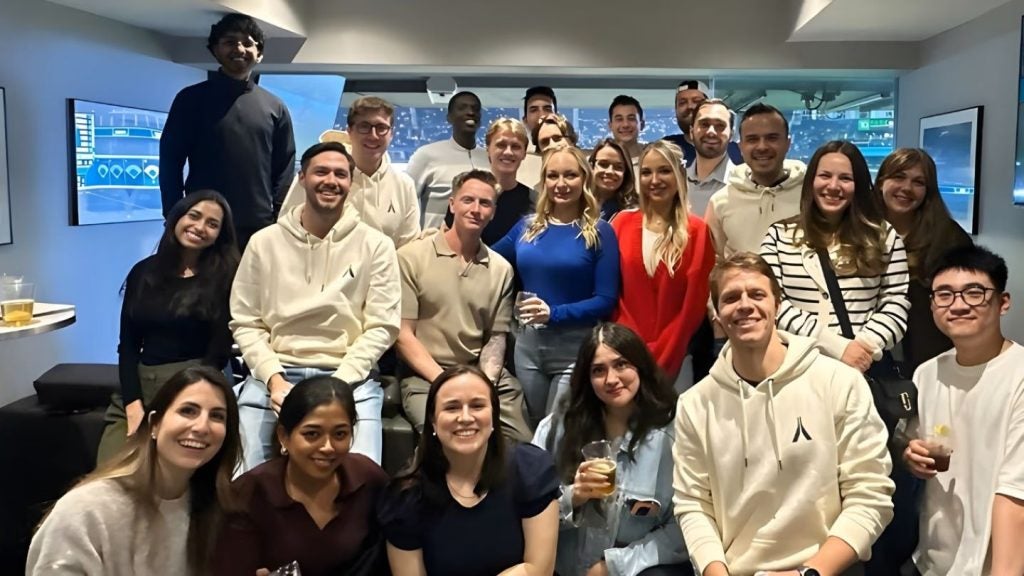

With a new wave of infections from the Delta variant of Covid-19 taking hold in the US, the slow progress of the country’s vaccination campaign in recent weeks has become a serious cause for concern.
Vaccination rates per million in the US are among the lowest in the developed world. As of 11 August 2021, only Switzerland had handed out inoculations at a slower pace.
Blue states, those that voted for Joe Biden in 2020’s presidential election, have seen their vaccination drives grind to a particularly juddering halt. Early August saw these states give out just 20 vaccinations for every 10,000 residents, compared with 23 in red states. Across highly developed countries, the average is 54.
More worrying still is the fact that Republican-voting states have stalled at a significantly lower level of vaccine coverage. Just under half of red state residents are fully vaccinated, compared with 54% in blue states.
All of the ten most vaccinated states lent their votes to Biden in the 2020 presidential election, while nine of the ten states with the lowest vaccination rates voted for Donald Trump (the other, Georgia, flipped blue for the first time in decades).

US Tariffs are shifting - will you react or anticipate?
Don’t let policy changes catch you off guard. Stay proactive with real-time data and expert analysis.
By GlobalDataThe results of this partisan divide in vaccine take-up have been deadly. While both highly vaccinated and largely unvaccinated states have experienced a growth in cases since late June 2021, the surge was three times larger in the latter.
Those states that have vaccinated the smallest shares of their population have seen a wave that looks much like the country’s previous, catastrophic waves of Covid-19. Deaths have spiked, rising by 256% on their 1 July levels.
In highly vaccinated states, by contrast, the link between cases and deaths has been weakened to an extraordinary degree. Despite a 292% growth in cases, lagged by eight days to account for the delay between infection and death, the number of deaths attributed to Covid-19 has risen just 7% since 1 July.
Why are red states more vaccine hesitant?
Partisanship has emerged as a key dividing line in the US's vaccination drive. The latest data from KKF suggests that just 14% of Democrats have yet to be vaccinated, compared with 46% of Republicans. One in five Republicans say that they will not get the vaccine, compared with just one in 20 Democrats.
An Investment Monitor analysis of county-level data found that the most significant factors associated with vaccine hesitancy are Republican vote share and the proportion of the population living in poverty. Together, these two factors alone can explain 29% of the variation in vaccine hesitancy across counties.
The link between Republican Party support and vaccine hesitancy isn’t simply down to poverty, education or race. Investment Monitor’s analysis found that, even accounting for levels of poverty, high-school education and ethnicity, a ten percentage point increase in Republican vote share is associated with an additional 1.1% of the population being vaccine hesitant.
The correlation is real, there’s no question about that, but voting itself doesn’t explain anything. Professor David Larsen, Syracuse University
Given that about 13.2% of the average county is vaccine hesitant, that would amount to a 9% increase in the total size of the vaccine-hesitant population.
However, Professor David Larsen of Syracuse University, who has studied the factors shaping vaccine hesitancy in upstate New York, cautions that political ideology is unlikely to be the factor driving this association. “The correlation is real, there’s no question about that, but voting itself doesn’t explain anything,” he says.
“Vaccination rates in the older people are still high and there are a lot of older people who are very ideologically Republican – that suggests it’s not ideology driving the partisan difference in vaccination rates.”
Is age the biggest factor in vaccine hesitancy?
More than one in five (21%) Americans aged 18 to 29 say that they will definitely not get the vaccine, compared with just 7% of those aged 65 or over. The last election saw 18 to 29-year-olds opt for Biden over Trump by a margin of 24 percentage points.
The big factor we observed among the hesitant was a lack of perceived susceptibility. People didn’t feel like it was a big deal – they either didn’t feel like coronavirus was serious or didn’t think that they might get it. Professor David Larsen
Hesitancy among young people is not unique to the US. With far lower mortality rates from Covid-19, young people worldwide have been less likely to get the vaccine. Rather than ideology, what appears to be driving vaccine hesitancy is a lack of concern about the effects of Covid-19 – a scepticism driven by misinformation in mainstream and social media.
“The group of Americans that are ideologically opposed to vaccines is relatively small – our measles vaccine coverage is still upwards of 95%,” says Larsen. “So, there’s something else happening that’s not this ideological anti-vaccine sentiment.
“The big factor we observed among the hesitant was a lack of perceived susceptibility. People didn’t feel like it was a big deal – they either didn’t feel like coronavirus was serious or didn’t think that they might get it. And that can correlate with news media coverage and, therefore, with voting behaviour, because it has been divisively covered.”
Fox News has faced heavy criticism for what many have claimed is misleading coverage of the vaccines. A study by Media Matters found that, during the two-week period sampled, 57% of Fox News segments discussing the vaccination campaign included claims that either undermined or downplayed the immunisation effort. More than one in three segments (37%) included false claims that the vaccine is either unnecessary or dangerous.
Vaccine hesitancy and media consumption
Polls have repeatedly shown that viewers of Fox News have significantly higher rates of vaccine hesitancy. Given that right-wing, Republican viewers are more likely to watch Fox News, however, separating the effects of partisanship and ideology from news consumption can be difficult.
A new study by a team of researchers in Switzerland seems to have worked a way around this problem, providing the strongest evidence yet of a direct causal link between Fox News viewership and vaccine hesitancy.
The team found that Fox News tends to have higher viewership, regardless of residents’ political attitudes, in counties where it has a lower channel number. By exploiting this ‘natural experiment’, they were able to separate the effects of partisanship and ideology from those of news consumption.
The researchers found that one additional hour of weekly Fox News consumption for the average household in a county is associated with a fall in the county’s weekly vaccination rate of between 35 and 76 people per 10,000, a relationship driven by younger viewers.
Poverty a factor in vaccine hesitancy
As well as a lack of concern with Covid-19, the strong correlation between poverty and vaccine hesitancy suggests that accessibility continues to be a barrier to vaccination.
In 23% of US counties, the majority of residents are more than 16km from the nearest vaccination clinic. For the poorest counties, that figure is 29%. For those with little time or money to spare for travel and no hope of paid sick leave to deal with any side effects, seeking a vaccine may not be a priority.
I’m hoping that as young people see their peers get sick and get hospitalised that they’ll get the vaccine. And hopefully it won’t be too late. Professor David Larsen
“A door-to-door approach would really boost coverage,” says Larsen. “That’s very different from trying to convince someone to take time out of their day to go down to the vaccination clinic.”
For others, the problem is not a lack of resources but a lack of information about the threat posed by the virus.
“In the US, the conversation has focused on deaths and hospitalisations without giving much room to discuss 'long Covid'. These long-term consequences of the virus are going to be the big burden of the disease,” says Larsen.
“The deaths are tragic and huge in number, but maybe ten to 20 times more than the deaths will be this long-term disability created by the virus, and that’s going to be borne by the young people.
“I’m hoping that as young people see their peers get sick and get hospitalised that they’ll get the vaccine. And hopefully it won’t be too late.”







